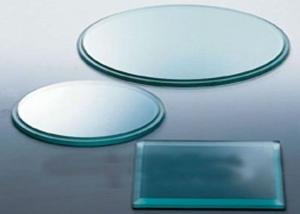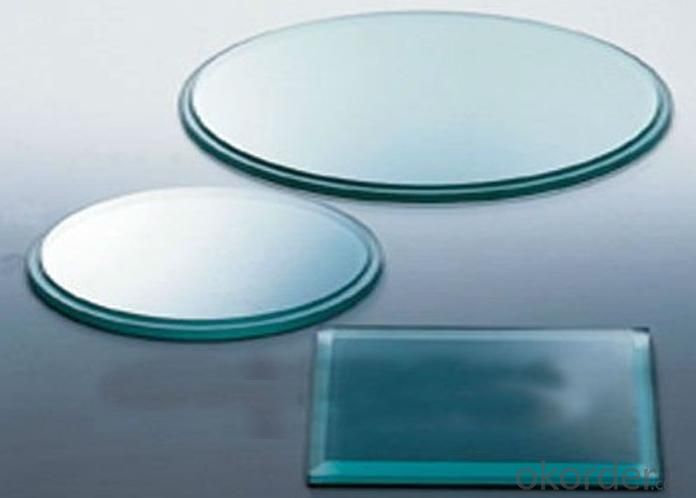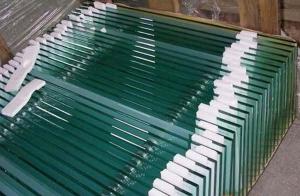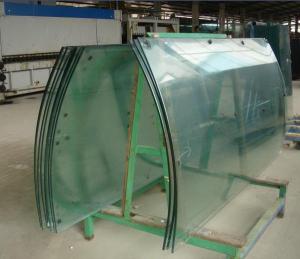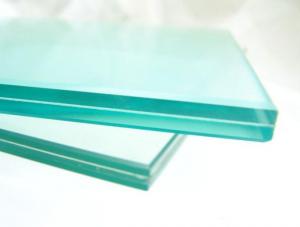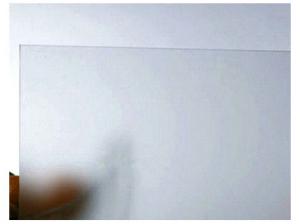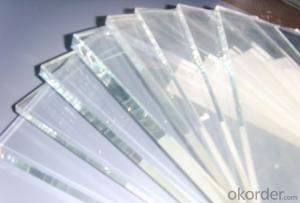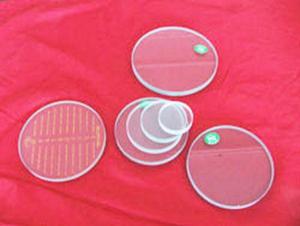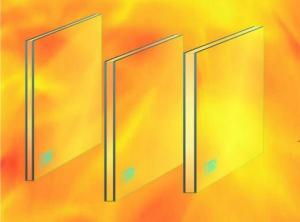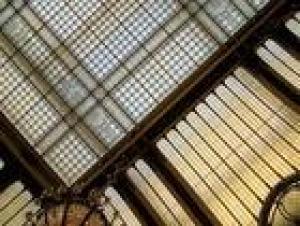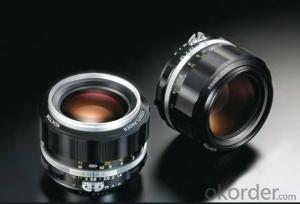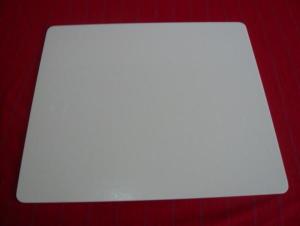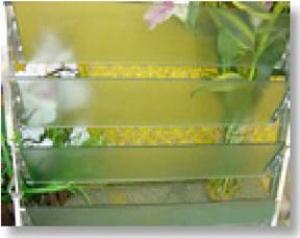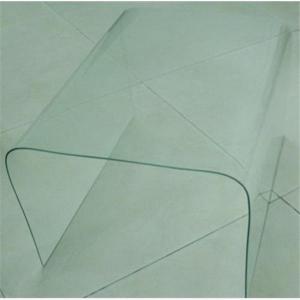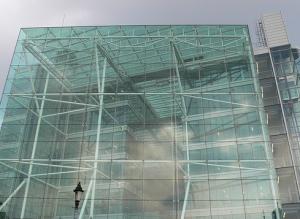Borosilicate Glass for Optical Inst 20mm
- Loading Port:
- China Main Port
- Payment Terms:
- TT or LC
- Min Order Qty:
- 10 Square Meters m²
- Supply Capability:
- 10000 Square Meters per Month m²/month
OKorder Service Pledge
OKorder Financial Service
You Might Also Like
Heat resistant Glass
High transmission Light
Stable chemical property
High Acid Resistant Glass
Specification of Borosilicate Glass
1) Dimension 1200mm×600mm 1150×850mm 1150×1700mm
2) Thickness 1.1~20mm
3) Net sized glass of strengthening can be supplied as per the customers requirement;
4) Glass of small cut size is available according the requirement from customers.
Performance of Borosilicate Glass
1). Mechanical Performance Density ρ 2.23±0.02g/cm3
2). Thermodynamic Performance
Thermal expansion coefficient (0-300) 3.3±0.1×10-6K-1 Softening point 820±10
Strain point 516±10 Caloricity (20-100) 0.82KJ × (kg×K)-1
Thermal coefficient 1.2W×m×K-1 Thermal shock resistance 180K
Strengthening type 300K Identical temperature difference 100K
Strengthening type 300 K
Maximum working temperature Short time(<10h): 500 long time(>10h): 450
3). Chemical Performance
Water resistance ISO719/DIN12111 HGB1/ISO720 HGA1
Acid resistance ISO1776/DIN12116 1 Alkali resistance ISO695/DIN52322 A2
4). Optical Property
Refractive index Nd: 1.47384 Transmittance spectrum curve
5). Electrical Property
Specific resistance lgρ 8.0Ω×cm at 250
Dielectric dissipation fraction tan σ (1 megacycle at 20): 38×10-4
Dielectric constant ε=4.7
Means of Processing for Customers
1. Cutting
2. Round corner
3. Round edge
4. Surface fine polishing
5. Hole drilling
6. Coating
7. Surface printing and sand blasting.
8. Thermal bending
Borosilicate 3.3 serves as a material of truly functional and wide applications:
1). Household electrical appliance (panel for oven and fireplace, microwave tray etc.);
2). Environmental engineering and chemical engineering (Lining layer of repellence, autoclave of chemical reaction and safety spectacles);
3). Lighting (spotlight and protective glass for jumbo power of floodlight);
4). Power regeneration by solar energy (solar cell base plate);
5). Fine instruments (optical filter);
6). Semi-conductor technology (LCD disc, display glass);
7). Iatrology and bio-engineering;
8). Safety protection (bullet proof glass)
- Q: Is glass a recyclable resource?
- Glass ceramic material: glass ceramics, hard texture, high mechanical strength, chemical stability and good thermal stability. But at present, the cost of traditional materials used in glass ceramics is higher. Glass ceramics made from float process and fly ash from power plants have been used to replace glass ceramics to produce glass ceramics successfully.
- Q: Renovation of the house to buy bricks when how to see the quality of good or bad? What kind of good?
- Mosaic is mainly divided into glass mosaic (raw materials for glass) and ceramic mosaic two. Mainly used for decorative wall.
- Q: What is glass made of?
- The glass has undergone intense temperature changes and shape changes during forming, leaving a thermal stress in the glass. This thermal stress will reduce the strength and thermal stability of glass products. If it is cooled directly, it is likely to rupture in the course of cooling, during or after storage, transportation, and use (commonly known as cold blasting of glass). In order to eliminate the cold explosion phenomenon, glass products must be annealed after forming. Annealing is to preserve or slow down a temperature for a period of time in order to eliminate or reduce the thermal stress in the glass to the allowable value.
- Q: What chemicals added to the PVB resin powder can be diluted into a transparent liquid?
- 1) PVB resinPVB intermediate membrane is mainly made of PVB resin..PVB resin is a macromolecule compound obtained by the reaction of polyvinyl alcohol and polyvinyl alcohol under the catalysis of strong acidPVB resin is non-toxic, odorless, non corrosive, non flammable, has good light transmittance, insulation, weather resistance, abrasion resistance, water resistance, oil resistance, aging resistance, adhesive and transparent special properties of inorganic and organic glass. Sandwich materials can be used as safety glass, and can be made transparent other materials used.2) plasticizersPlasticizer 3G8 used in PVB intermediate film has good phase solubility with PVB resin, and has good cold resistance, heat resistance and so on3) additivesIn addition to the above two main raw materials, PVB intermediate membrane, in order to adjust the adhesive force, improve the weather resistance and isolate ultraviolet radiation, also added a relay regulator, antioxidant, UV absorbers and other additives
- Q: The benefits of natural thin wood planks
- Sheet material means a flat rectangular building material plate with a width of more than 2 times its thickness, usually made of flat rectangular building material, used as a wall, ceiling, or floor member. Also refers to the forging, rolling or casting of the metal plate, divided into thin plate, medium plate, thick plate, thick plate, usually made of standard size flat rectangular building material board.
- Q: Aluminum alloy window glass tape, how fast loading?
- The outer mounting method is that the operator stands on the scaffold or basket to carry out the glass installation of the aluminum alloy glass window. Fix the sealing strip first, fix the glass, then fix the outer side, and inject sealant into the cavity to fix the joint. This is a mix of dry and wet two materials.
- Q: Who can tell me the raw material and function of the flashy glass?
- The forming process of float glass is completed in the tin bath which passes through the protective gas (N2 and H2). The molten glass from the pool kiln in the continuous inflow of floating on the surface of liquid tin and relative density on the gravity and surface tension, the glass liquid level in the swing, tin flat, smooth surface, hardening and cooling was cited on the transition table.
- Q: What is quartz made of?
- Applications and uses of 1 quartz glass, flat glass, float glass, glass (glass jar, glass bottle, glass tube), the main raw material of optical glass, glass fiber, glass, conductive glass, glass cloth and anti ray special glass 2, ceramics and refractories embryo material and porcelain glaze, the furnace with high silica, ordinary brick raw materials such as silicon carbide 3, metallurgical silicon metal, ferrosilicon alloy and silicon Aluminum Alloy and other raw materials or additives, flux
- Q: What is the raw material of glass?.
- Glass material is complex, but can be divided into main raw materials and auxiliary raw materials according to its function. The main material constitutes the main body of the glass, and determines the main physical and chemical properties of the glass. The auxiliary material endows the glass with special properties and facilitates the manufacturing process.
- Q: What's the difference between heat resistant glass and tempered / reinforced glass?
- Energy saving, good electrical properties by vacuum negative pressure plug suction, super seal with, can make the heating of the internal heat is reduced to a minimum, at the same time using glass conductive properties under the condition of high temperature, the glass heating to realize glass melting, with advanced production technology and processing, barbecue in the microwave oven when the microwave absorption are good electrical properties
1. Manufacturer Overview
| Location | Guangdong,China |
| Year Established | 2011 |
| Annual Output Value | |
| Main Markets | 8.33% North America 8.33% South America 8.33% Eastern Europe 8.33% Southeast Asia 8.33% Africa 8.33% Oceania 8.33% Mid East 8.33% Eastern Asia 8.33% Western Europe 8.33% Central America 8.33% Northern Europe 8.33% Southern Europe |
| Company Certifications | ISO 9001:2000 |
2. Manufacturer Certificates
| a) Certification Name | |
| Range | |
| Reference | |
| Validity Period |
3. Manufacturer Capability
| a) Trade Capacity | |
| Nearest Port | guangzhou |
| Export Percentage | 61% - 70% |
| No.of Employees in Trade Department | 11-20 People |
| Language Spoken: | English, Chinese |
| b) Factory Information | |
| Factory Size: | |
| No. of Production Lines | |
| Contract Manufacturing | |
| Product Price Range | |
Send your message to us
Borosilicate Glass for Optical Inst 20mm
- Loading Port:
- China Main Port
- Payment Terms:
- TT or LC
- Min Order Qty:
- 10 Square Meters m²
- Supply Capability:
- 10000 Square Meters per Month m²/month
OKorder Service Pledge
OKorder Financial Service
Similar products
Hot products
Hot Searches
Related keywords
